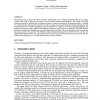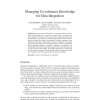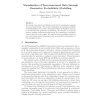IMECS
2007
15 years 2 months ago
2007
— A pseudo-reverse approach is presented in this paper to analyze the evolutionary behaviour of enzymes. It employs the standard model of Nei and Gojobori [1] in a generalized fo...
ICMLA
2008
15 years 2 months ago
2008
Learning by imitation has shown to be a powerful paradigm for automated learning in autonomous robots. This paper presents a general framework of learning by imitation for stochas...
102
click to vote
ICMLA
2008
15 years 2 months ago
2008
This article presents an approach to estimating exercise energy expenditure based on acceleration measurements from a wrist-worn biaxial sensor. The method uses the linear mixed m...
105
click to vote
HCI
2007
15 years 2 months ago
2007
In this paper we present a procedure to learn a topological model of Situated Public Displays from data of people traveling between these displays. This model encompasses the dista...
100
click to vote
IADIS
2008
15 years 2 months ago
2008
This paper presents an improved software estimation model, which uses to estimate developing effort of e-Learning's contents. This model is called the e-Learning courseware E...
ESANN
2008
15 years 2 months ago
2008
We present a computational model of amygdala neural networks. It is used to simulate neuronal activation in amygdala nuclei at different stages of aversive conditioning experiments...
ESANN
2008
15 years 2 months ago
2008
We propose a modification of the dynamic neural field model of Amari [1], aiming at reducing the simulation effort by employing spaceand frequency representations of the dynamic st...
EMNLP
2008
15 years 2 months ago
2008
We present a generative model for unsupervised coreference resolution that views coreference as an EM clustering process. For comparison purposes, we revisit Haghighi and Klein�...
100
click to vote
EJC
2008
15 years 2 months ago
2008
This paper presents a novel model of co-reference knowledge, which is based on the distinction of (i) a model of a common reality, (ii) a model of an agent's opinion about rea...
ESANN
2007
15 years 2 months ago
2007
We present a generative probabilistic model for the topographic mapping of tree structured data. The model is formulated as constrained mixture of hidden Markov tree models. A nat...



